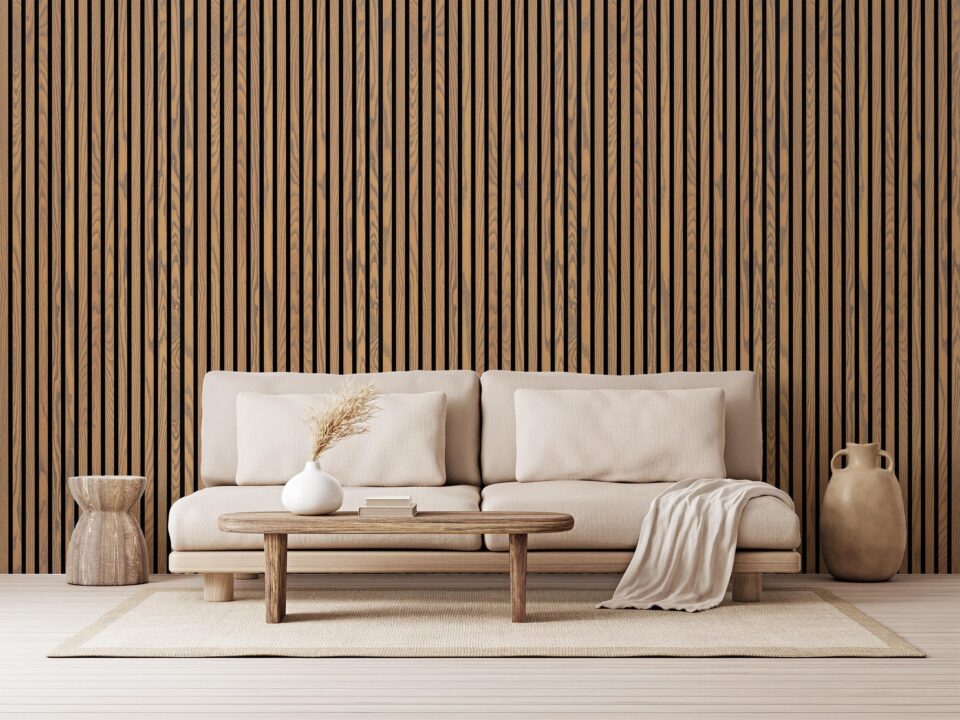In the world of interior design, the pursuit of timeless elegance regularly inspires the creation of interior spaces that are the epitome of warmth and sophistication, as well as respect for nature. Out of these elements, wood panelling is a standout material that has been used for centuries—an incredibly versatile and durable choice. It not only increases the beauty of a space but also provides many benefits. Timber panelling has a style-ranging character that distinguishes others from traditional or contemporary settings. Thus, wood panelling and timber wall cladding are unusually individualistic, adding colour to rooms with charm and a dash of rustic feeling.
The Timeless Appeal of Timber
For centuries, people have prized timber as a building material for its long tradition and natural beauty. Because it imparts warmth and character to any setting because it comes in various colours and grain patterns. The texture and depth of varied colours create more tactile and visual attention. Unlike mass-produced materials, each wood panel is a unique piece that contributes to a feeling of authenticity and good artistry that is impossible to duplicate.
The Benefits of Timber Panelling
Timber panelling, a versatile and classic interior design feature, has infinite ways to enhance things. It’s not only practical and aesthetically appealing, but timber panelling enriched environments in many ways. Some of its best benefits are listed below:
Timeless Aesthetic Appeal
Timber panelling gives any space a timeless grace that imparts warmth, personality, and elegance. The rich grain patterns and various hues of its natural beauty create an attractive backdrop that fits a wide range of interior styles, from traditional to contemporary.
Design is Flexible
Timber panelling could be more malleable in terms of design. It can be customised to accommodate various architectural styles and aesthetic preferences. Whether they are classic tongue-and-groove panels or streamlined modern systems, reclaimed rustic wood, timber panelling offers nearly endless ways for creativity to manifest.
Warmth and Texture
Timber other materials often cannot duplicate it, timber panelling is used to bring warmth and texture to interior spaces. The irregularity, knots, and grain patterns of timber create interest and depth, making rooms feel more inviting and intimate.
Acoustic Advantages
Wood has natural acoustic properties and can absorb sounds, lowering noise levels in its surroundings. Thus, timber panels are an excellent choice for enhancing acoustics in places such as offices or conference rooms, restaurants (where conversation is a significant part), commercial lounges (rather than residential areas strictly), or anywhere else where people are too cranked up about their noise levels.
Strength and Longevity
Good-quality panelling, made from timber, can be hard-wearing and last a long time. Timber panels that are appropriately cared for will maintain their beauty and structural condition over the years, because of this, they are an economical investment in the long term.
Sustainability
Using timber panelling supports good environmental practices because it is made from a renewable resource harvested from well-managed forests. So, by using timber panelling, you’re supporting good environmental practices. Also, timber panelling can be reused or repurposed when it wears out, thereby adding to its ‘green’ worth.
Thermal Protection
Timber has good thermal insulation characteristics, helping to control the temperature indoors and save energy. In this way, timber panelling can create a warmer, more energy-efficient workplace by reducing heat loss in winter and rising summer temperatures.
Simplicity of Installation and Maintenance
Whether mounted on walls, ceilings, or other surfaces, panelling made of wood is relatively easy to install. With the correct approach and know-how for assembly, installing wooden panels is both fast and economical. Furthermore, timber panelling is fairly easy to look after, requiring only a good wipe and occasional varnishing to keep it fresh and attractive.
Choosing the Right Type of Timber for Your Panelling Project
When choosing timber for panelling, consider the following factors:
- Timber Species Selection: If you want your panelling to be solid and durable, choose hardwoods (e.g., oak or walnut); for those who prefer something more budget-friendly with an earthy colour, softwoods are available (e.g., pine, cedar).
- Hardwood vs. Softwood: Hardwood endures wear and tear, whereas softwood provides a cheaper alternative possessing natural beauty.
- Grain Patterns: Each wood species has its unique grain pattern, which imparts character and visual interest to any space. This ranges from straight vertical lines to intricate swirling or bold knots.
- Colour variations: Members of the wood species can have reddish maroon or brown hues and lighter yellows and whites, affecting the finished appearance and even how it fits in with existing decor.
By considering these factors in detail, the goal of establishing a style that is durable and ultimately meets your aesthetic taste can fit into any decor scheme as well.
Timber Panelling Installation: A Step-by-Step Guide to Getting the Perfect Finish
To succeed in putting in timber panelling, you need a flawless finish as a foundation for success. In this guide, you can relax as we provide you with all the information and tools to get your project done right.
- Preparation: Inspect and repair any defects on the wall where wooden panels will be installed. Increase adherence and herd wear resistance by cleaning and priming the surface.
- Precision Measurement and Marking: Measure and mark each panel’s location, ensuring that there is an exact space between them..
- Proper Installation Techniques: You must use the right tools to cut the panel to size. Secure the panels tightly with nails or screws designed specifically for wood panelling.
- Alignment for a Smooth Surface: During installation, align the panels carefully to achieve a smooth finish.
- Consider Expansion Gaps: If need be, to allow for the wood’s normal seasonal movement, make sure that there’s breathing room.
- Essential Tools: Essential tools such as measuring tools (tape measure, level), cutting tools (saws), fastening tools (nails or screws), and safety equipment (gloves and safety glasses).
In Summary
Timber panelling is a traditional and flexible way to improve home interiors, combining nature’s beauty with warmth and practicality. Whether designed to house a cosy reading nook, elevate dining rooms with elegance, or impart character to commercial settings, timber panelling has an impact that endures time. With its beautiful form and function, environmental friendliness, and practical aspects, timber panelling enhances urban living spaces and continues to be cherished by designers and homeowners.

